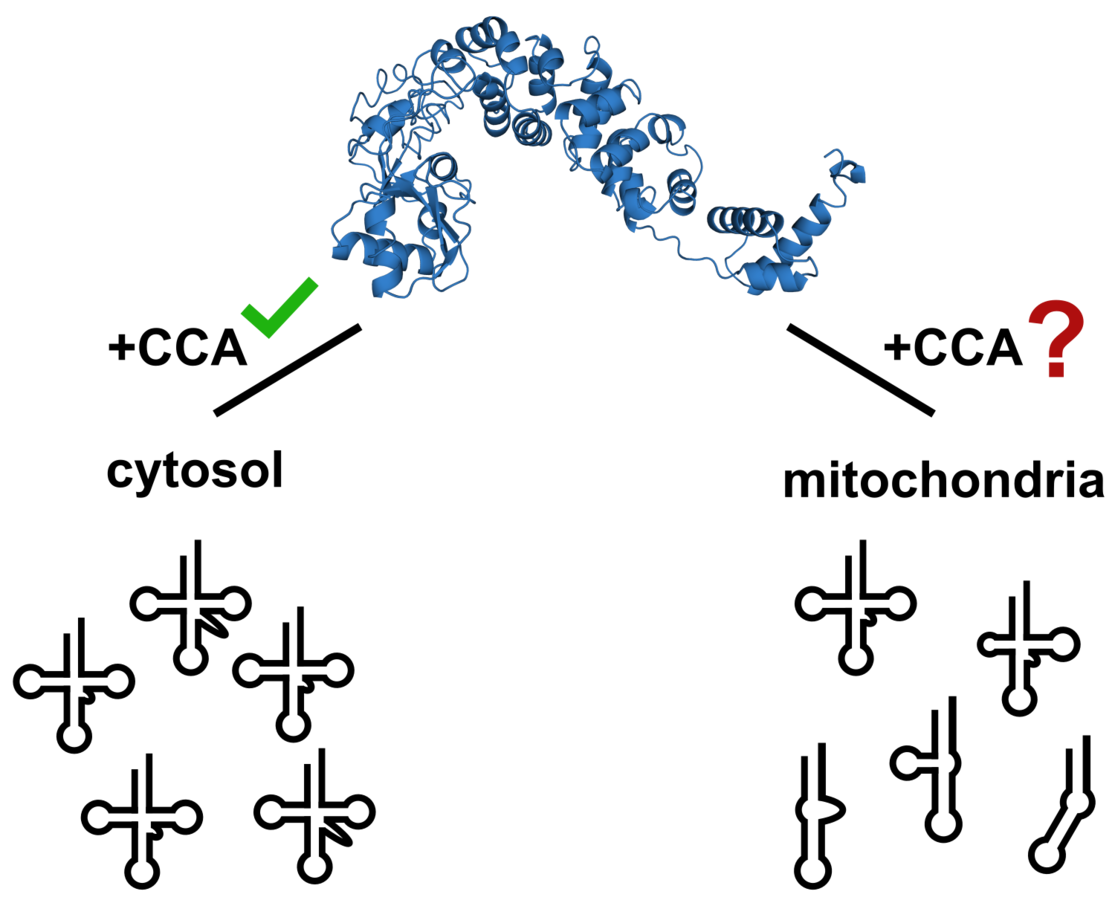Mature tRNAs carry a CCA-triplet at the 3′-end which is an essential prerequisite for aminoacylation and translation. In most organisms, this triplet is not encoded in the tRNA genes and has to be incorporated post-transcriptionally by ATP(CTP):tRNA nucleotidyltransferases (CCA-adding enzymes). Intriguingly, this reaction is catalyzed with very high accuracy despite the fact that no nucleic acid-based template is involved.
Most organisms possess a single CCA-adding enzyme which has to process cytosolic as well as mitochondrial tRNAs. Interestingly, in some organisms mitochondrial tRNAs can be found lacking the D- or the T-arm or even both of them. We investigate how CCA-adding enzymes evolved in order to adapt to such bizarre and armless tRNAs and how they are capable to add the complete CCA-triplet to such aberrant substrates in a correct manner.
We are studying the enzymatic features of ancestral tRNA nucleotidyltransferases and their evolution into modern enzymes. Together with our collaboration partners, we are investigating reconstructed ancestors of CCA-adding enzymes from Gammaproteobacteria that we recombinantly express for in vivo as well as in vitro studies, where we explore the substrate specificity, polymerization fidelity and other enzymatic properties.
Since eukaryotes do not encode the 3′-CCA end in their tRNA genes, tRNA nucleotidyltransferases are essential in these organisms. Our analysis of a number of gene sequences encoding for eukaryotic tRNA nucleotidyltransferases revealed the occurrence of multiple genes in certain organisms, such as Amoeba, Fungi and Choanoflagellates. We are investigating the function, activity and evolution of these multiple enzymes.
Due to the highly diverse properties of tRNA nucleotidyltransferases from all domains of life, robust methods for their analysis are desirable. A comparative in vivo characterization has many advantages over in vitro approaches, since catalytic efficiency can be investigated under natural conditions. Further, in vivo systems allow for protein engineering via semi‑rational design. We established an E. coli-based system utilizing a host strain lacking the endogenous CCA‑adding enzyme to suppress unwanted background activity. This approach is very useful for both screening and selecting enzyme variants and we are able to monitor the enzymes’ impact on cellular growth fitness in a straight-forward manner.
